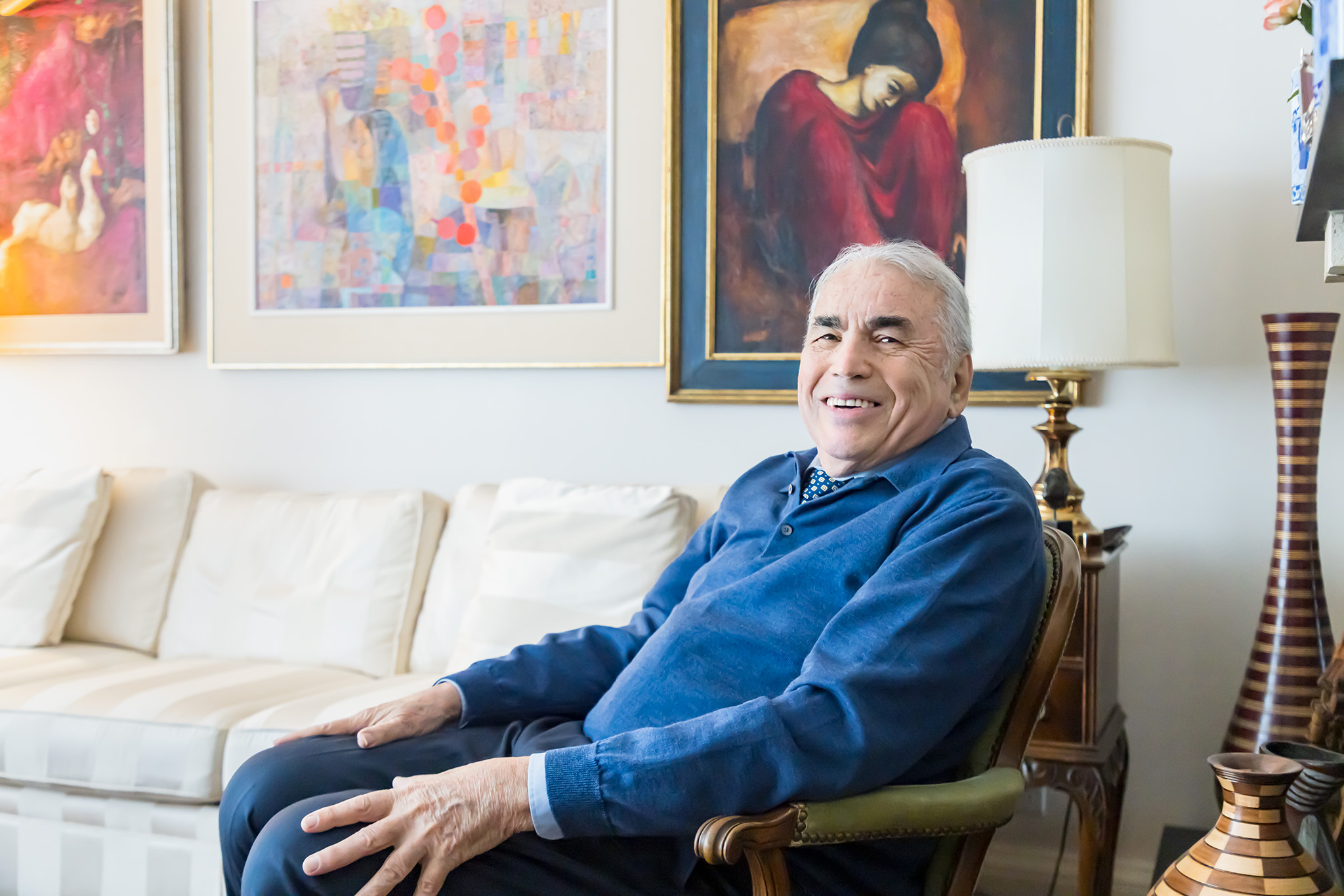View
Unmasking Injustice
by Carolyn Gruske
photography by Horst Herget
In 2001, Harold Levy (BA ’64, LLB ’68), then an investigative reporter for the Toronto Star, wrote his first article about Dr. Charles Smith. Little did he know this story would consume the next two decades of his life, exposing a trail of wrongful convictions and upending Canada’s forensic pathology system.
Levy’s unique background – an Osgoode Hall Law School-trained criminal lawyer turned journalist – proved crucial in unravelling the complex web of Smith’s cases. “I felt a horror at what he was doing to these innocent people. It was horrible. It was mean. It was cruel,” Levy recalls.
Between 2001 and his retirement from the Star in 2006, Levy filed more than 40 stories about Smith, meticulously documenting how the once-revered pediatric forensic pathologist’s flawed testimony had sent innocent parents to prison for killing their own children.
Levy’s relentless reporting didn’t just expose individual injustices, it sparked systemic change. The Goudge Inquiry, prompted by Levy’s exposés, led to 169 recommendations that reshaped Ontario’s forensic pathology system. These suggestions included creating the Ontario Forensic Pathology Service, developing accredited training programs for forensic pathologists and emphasizing an evidence-based culture.

The province also committed to reviewing 220 “shaken baby syndrome” cases and exploring compensation for those wrongfully convicted based on Smith’s testimony. Levy’s work had effectively rewritten the rules, with civil procedure now explicitly requiring expert evidence to be “fair, objective and non-partisan.”
But retirement didn’t end Levy’s quest for justice. Instead, he launched a blog to ensure his continued media access to the inquiry. The blog went on to transform his retirement into a global crusade against wrongful convictions.
“I called it the Charles Smith blog – chutzpah! – which was fun. I just co-opted his name,” Levy says with a hint of mischief. What he expected to be “an interim thing” has since exploded into a formidable force, amassing more than 10,000 posts and 4.2 million visits.
Today, Levy’s blog spotlights similar injustices worldwide, where flawed science and personal biases have robbed innocent people of their freedom. “This is essentially my obsession,” Levy says. “But I think it’s the healthiest obsession that anybody could have.”
His tireless efforts have now earned him the 2024 Rubin “Hurricane” Carter Champion of Justice Award from Innocence Canada. The award was presented on Oct. 2, at the 10th anniversary gala event for International Wrongful Conviction Day, held at the Ontario Bar Association Grand Salon in Toronto. Levy accepted the honour in a room filled with those whose lives he’d touched – including several of Smith’s victims.
“It really gave me a kick in my heart,” Levy says, recalling the moment Susan Milgaard, sister of the late David Milgaard, presented him with the award.
In his acceptance speech, Levy highlighted the case of Iwao Hakamada, a Japanese former boxer who spent nearly five decades on death row before being released in 2014. Hakamada, whom Levy referred to as “the Japanese Rubin Carter,” and his case exemplify the global nature of wrongful convictions and the importance of continued advocacy. Hakamada was finally acquitted in September 2024, just days before Levy’s award ceremony, after a retrial found that key evidence had been fabricated.
Ron Dalton, co-president of Innocence Canada and an exoneree himself, emphasized the importance of the award. “Frank and open discussion about the causes of wrongful convictions can lead to positive change in our criminal justice systems and help reduce future wrongful convictions, and avoid the immeasurable suffering of innocent people and their families globally,” said Dalton in the award announcement.
Levy’s penchant for impactful journalism began during his undergraduate days at Glendon College. Before enrolling at Osgoode Hall for his law degree, Levy and some friends decided the fledgling University needed a student newspaper. “We couldn’t find a name. We couldn’t agree on the name. I thought, ‘OK, we need a name for the time being, Pro Tem. We’ll call it Pro Tem.’ And of course, it’s funny but 60-plus years later, they still call it the Pro Tem, and it’s still going.”
■